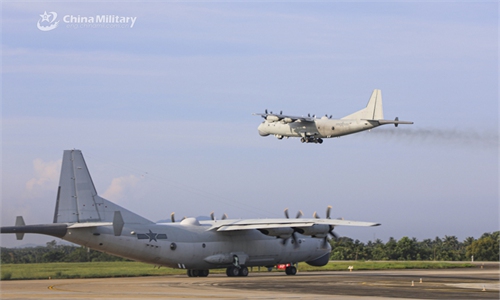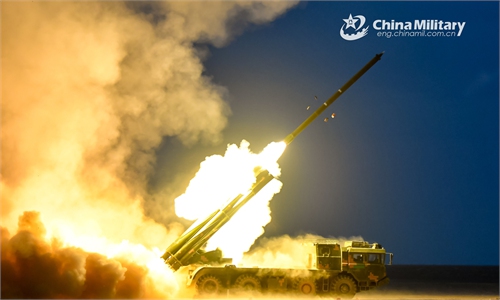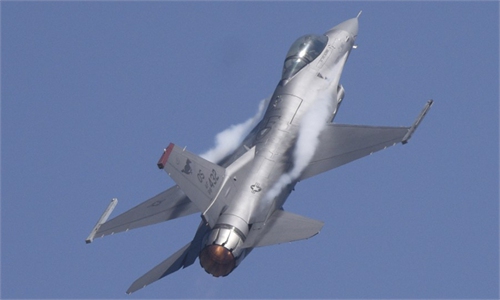Hyping 'removal of Chinese floating barrier' near Huangyan Island not beneficial to Philippines: experts

File photo taken in July, 2016 shows Chinese H-6K bomber patrolling islands and reefs including Huangyan Island in the South China Sea. (Xinhua/Liu Rui)
The Philippines said it has removed the "floating barrier" China deployed near Huangyan Dao (Huangyan Island) in the South China Sea, a claim questioned by experts who on Tuesday also said that such hype does not fit the national interest of the Philippines, but that of the US.
The Philippines' so-called statement was just what the Philippines tells itself, Wang Wenbin, a spokesperson at China's Ministry of Foreign Affairs, said at a regular press conference on Tuesday in response to a statement by the Philippine Coast Guard on Monday claiming it has removed the "floating barrier" deployed by the China Coast Guard on the southeast side of Huangyan Island that obstructed Philippine fishermen from entering the area for fishing activities.
"China's resolve in safeguarding its sovereignty and maritime rights and interests over Huangyan Island is unwavering. We call on the Philippines not to make provocation or stir up trouble," Wang said.
A lot of questions remain over the "floating barrier" and their alleged removal, as the South China Sea Strategic Situation Probing Initiative (SCSPI), a Beijing-based think tank, said on Tuesday that the objects the Philippine side had removed as shown in a video released by the Philippine Coast Guard does not match the "barriers" depicted in photos the Philippines released earlier.
The Philippines is hyping this "floating barrier" to throw mud at China, which is not a right approach to resolve the issue, Zhang Junshe, a Chinese naval expert, told the Global Times on Tuesday.
The situation over the Huangyan Island is just another case highlighting recent Philippine provocations in the South China Sea.
In a move to win US support for its claims in the South China Sea, the Philippines opened four additional military bases to the US earlier this year so the US military can intervene in the Taiwan question and the South China Sea issue from a closer range, analysts said.
Then, the Philippines made several failed attempts to deliver building materials to reinforce its illegally grounded warship on China's Ren'ai Jiao (also known as Ren'ai Reef) since August and publicly hyped the rightful interceptions by the China Coast Guard.
Zhang said that the US is applying its offshore balancing strategy and using the Philippines as a pawn to contain China.
The Philippines is now infatuated in relying on the US to provoke China, but the US will never engage China in a military conflict for the interests of the Philippines, and the Philippines surely cannot gain any advantage if it is to face China alone, Zhang said.
China promotes management of crises and differences and seeks to enhance cooperation, Zhang said. "The Philippines should not see China's restraint and forbearance as weakness and misjudge the situation. Provocations will not lead to any benefits to the Philippines' national interests," he said.
Even under tensions between the two countries, the Chinese People's Liberation Army (PLA) Navy Type 056A corvette Aba on a combat patrol mission near Ren'ai Reef rescued a wounded Philippine fisherman seeking help on September 17, the PLA Navy said in a press release on Sunday.




